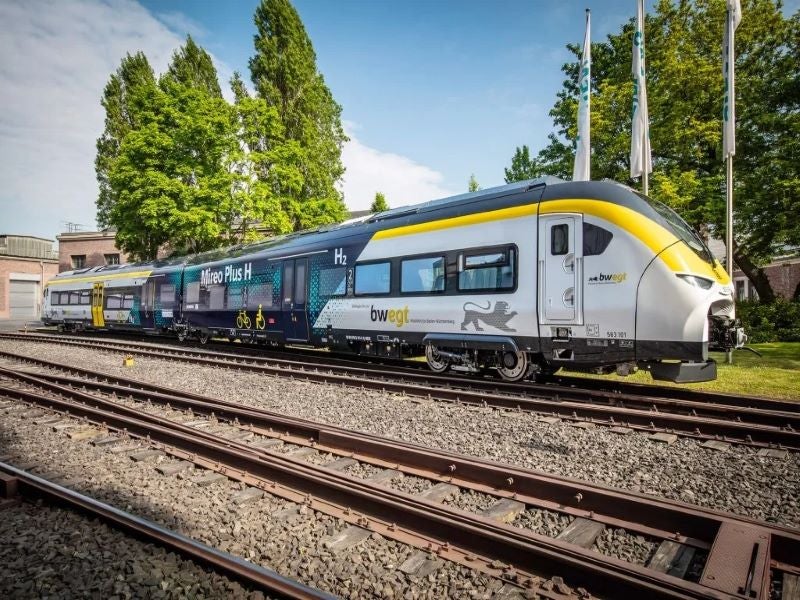
Deutsche Bahn (DB) and Siemens Mobility have unveiled next-generation hydrogen-powered train, dubbed Mireo Plus H, which is designed for the H2goesRail project in Germany.
The companies have also revealed a hydrogen storage tank trailer for fast mobile refuelling by DB. These components of the H2goesRail project were showcased at the Siemens facility in Krefeld of Germany.

Discover B2B Marketing That Performs
Combine business intelligence and editorial excellence to reach engaged professionals across 36 leading media platforms.
Mireo Plus H train and its new infrastructure were developed for the replacement of diesel multiple-unit trains in commuter and regional transport as well as rail-related CO2 emissions reduction to zero.
Germany’s Federal Ministry for Digital and Transport (BMDV) provided €13.74m for the H2goesRail project under the National Innovation Programme for Hydrogen and Fuel Cell Technology (NOW GmbH).
NOW GmbH is coordinating the funding guideline, while implementation is monitored by project lead Jülich.
Siemens Mobility CEO Michael Peter said: “With the Mireo Plus H, we’ve developed the next generation of hydrogen-powered trains that offers a particularly long operating range and faster acceleration.

US Tariffs are shifting - will you react or anticipate?
Don’t let policy changes catch you off guard. Stay proactive with real-time data and expert analysis.
By GlobalData“Each delivered train can save up to 45,000 tons of CO2 over its service life of 30 years compared to corresponding travel with cars.”
Mireo Plus H is a two-car train with an operating range of up to 800km and a top speed of 160km per hour.
Featuring a modern hydrogen drive system, the two-car commuter train will feature a fuel cell and a lithium-ion battery.
The train has 1.7MW of traction power that can deliver up to 1.1 m/s2 acceleration. A three-car version will have a range of up to 1,000km.
The train will enter passenger service between Tübingen, Horb, and Pforzheim in 2024, upon completion of a test phase. It is expected to cover around 120,000km in its service.
Using green electricity taken directly from the overhead power line, DB will produce hydrogen in Tübingen. DB maintenance depot in Ulm will be accordingly equipped to service the train.



